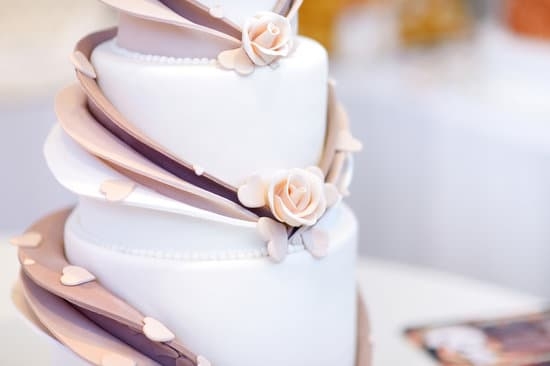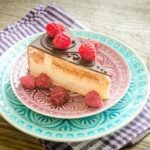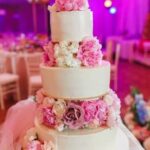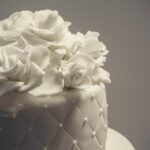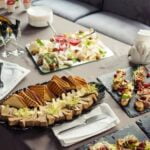When it comes to creating beautiful and delicious cakes, decorating with buttercream is a classic and versatile choice. Whether you’re a beginner or a seasoned baker, mastering the art of decorating buttercream cakes can take your creations to the next level. From simple swirls to intricate designs, buttercream offers endless possibilities for customization and creativity.
Buttercream cake decorating involves using a smooth and creamy frosting made from butter, confectioners’ sugar, and flavorings. The keyword in achieving a stunning buttercream cake lies in the skillful application of this delicious icing. Learning about different types of buttercream frosting, essential tools and supplies, crumb coating techniques, piping methods, and finishing tips can help you elevate your cake designs and wow your guests.
In this comprehensive guide to decorating buttercream cakes, we will explore various aspects of this popular technique. From choosing the right type of frosting to mastering different piping techniques and avoiding common mistakes, you’ll gain valuable insights into creating visually appealing and mouthwatering cakes that are sure to impress any audience. So let’s dive into the world of buttercream cake decoration and unleash your creativity in the kitchen.
Types of Buttercream Frosting for Cake Decoration
Buttercream frosting is a versatile and popular choice for decorating cakes due to its smooth texture and ability to hold intricate designs. There are several types of buttercream frosting that you can use to decorate your cakes, each offering unique qualities and flavors.
American Buttercream
American buttercream is perhaps the most commonly used type of buttercream frosting for cake decoration. It is simple to make, using just butter, powdered sugar, vanilla extract, and a bit of cream or milk. This type of buttercream is known for its sweet flavor and creamy texture, making it great for piping borders and decorations on cakes.
Swiss Meringue Buttercream
Swiss meringue buttercream is a lighter and less sweet option compared to American buttercream. It is made by whisking egg whites and sugar over a double boiler until stiff peaks form, then adding in softened butter. This type of buttercream has a silky smooth consistency, perfect for creating smooth finishes on cakes or delicate piped designs.
Italian Meringue Buttercream
Italian meringue buttercream is similar to Swiss meringue buttercream but involves pouring hot sugar syrup into whipped egg whites instead of cooking them over a double boiler. This results in a stable and fluffy frosting with a glossy finish. Italian meringue buttercream works well for decorating tiered cakes or intricate floral designs on cakes due to its stability.
Experimenting with different types of buttercream frosting can help you achieve the desired texture and taste for your decorating needs. Whether you prefer the sweetness of American buttercream, the lightness of Swiss meringue, or the stability of Italian meringue, there is a variety to suit every baker’s preference when decorating buttercream cakes.
Essential Tools and Supplies for Decorating Buttercream Cakes
When it comes to decorating buttercream cakes, having the right tools and supplies is crucial to achieving professional-looking results. Here are some essential items you will need in your decorating arsenal:
- Piping bags: Invest in reusable piping bags made of sturdy materials like nylon or silicone for better control and durability.
- Piping tips: Different piping tips create various designs, from intricate flowers to simple borders. Start with basic tips like round, star, and leaf tips.
- Offset spatula: An offset spatula is ideal for spreading and smoothing buttercream on cakes, creating a seamless finish.
- Bench scraper: Used for leveling buttercream surfaces and creating sharp edges on cakes, a bench scraper is a handy tool for achieving clean lines.
- Turntable: A revolving turntable allows you to easily rotate the cake while decorating, ensuring even coverage and precise decorations.
In addition to tools, certain supplies are essential for decorating buttercream cakes effectively:
- Buttercream frosting: Choose a smooth and creamy buttercream recipe that holds its shape well for piping decorations.
- Gel food colors: Gel-based colors are more concentrated than liquid food colors, allowing you to achieve vibrant shades without altering the consistency of your buttercream.
- Fondant or gum paste (optional): These pliable materials can be used to create elaborate decorations like flowers, figures, or embellishments for your buttercream cake.
With the right tools and supplies at your disposal, you’ll be well-equipped to explore different techniques and unleash your creativity when decorating buttercream cakes. Remember that practice makes perfect, so don’t be afraid to experiment with new ideas and designs.
Step-by-Step Guide to Crumb Coating a Cake With Buttercream
Gather Your Supplies
Before starting the crumb coating process, it is essential to gather all the necessary supplies. You will need a cooled and leveled cake, buttercream frosting of your choice, an offset spatula, and a turntable for easier application.
Apply a Thin Layer of Buttercream
Start by placing a dollop of buttercream on top of your cake and using the offset spatula to spread it evenly across the top. Make sure the layer is thin but covers the entire surface of the cake. This initial layer helps trap any loose crumbs, giving you a smooth base for additional frosting.
Smooth Out the Surface
Once you have covered the top of the cake, use more buttercream to coat the sides. Work in a smooth, even motion to ensure complete coverage. Use a bench scraper or straight edge tool to help create sharp edges on your cake while removing excess frosting. Continue smoothing out any imperfections until you achieve a flawless finish.
By following these steps meticulously, you can create a perfect canvas for decorating buttercream cakes. The crumb coat not only seals in moisture but also provides a stable foundation for adding intricate designs and details to your creation. Whether you are a beginner or experienced baker, mastering this technique is crucial for achieving professional-looking results in cake decoration.
Different Piping Techniques for Buttercream Cake Decoration
Piping techniques are essential in achieving beautiful and intricate designs when decorating buttercream cakes. Here are some popular piping techniques that you can use to elevate your cake decorating skills:
- Rosettes: Create stunning flower-like designs on your cake by piping rosettes using a star-shaped piping tip. Simply squeeze the piping bag while slowly turning your wrist to create the desired rosette shape.
- Swirls: Swirls are a classic buttercream decoration that adds elegance to any cake. Use a round piping tip to pipe swirls in a continuous motion, creating a smooth and decorative pattern on your cake.
- Ruffles: Add texture and dimension to your cake by piping ruffles with a petal or leaf-shaped piping tip. Pipe gently curved lines of buttercream overlapping each other to create a delicate ruffled effect.
Experimenting with different piping techniques can help you discover new ways to decorate buttercream cakes and unleash your creativity. Whether you’re aiming for a simple and elegant design or a more elaborate and intricate look, mastering these techniques will help you achieve professional-looking results when decorating buttercream cakes.
Remember to practice these piping techniques on parchment paper or a practice board before applying them directly onto your cake. With patience and precision, you’ll soon be able to create beautifully decorated buttercream cakes that will impress your friends and family at any celebration or event.
Tips for Achieving Smooth Buttercream Finish on Cakes
Achieving a smooth buttercream finish on cakes is a crucial skill for any baker looking to create professional-looking desserts. One of the simplest ways to ensure a flawless finish is by starting with a well-crafted crumb coat.
A crumb coat is a thin layer of buttercream that seals in any loose crumbs, creating a smooth foundation for the final layer of frosting. To apply a crumb coat, spread a thin layer of buttercream over the entire cake and refrigerate it until firm before adding the final layer.
Another important tip for achieving a smooth buttercream finish is to use an offset spatula for spreading the frosting. An offset spatula allows for more control and precision when working with buttercream, resulting in smoother and cleaner lines on the cake. Additionally, using a bench scraper can help achieve sharp edges and straight sides on layered cakes.
One common technique for creating a smooth buttercream finish is called the “Viva paper towel method.” This method involves smoothing out the frosting using Viva brand paper towels, which have no imprints or patterns that could transfer onto the cake. Simply place the paper towel against the frosted cake and gently run your hand over it to smooth out any imperfections in the buttercream. This technique can give your cake a flawless finish that will impress your guests.
| Tips | Benefits |
|---|---|
| Use an offset spatula | Precision and control |
| Bench scraper | Sharp edges and straight sides |
| Viva paper towel method | Smooth out imperfections |
Creative Ideas for Buttercream Cake Designs
When it comes to decorating buttercream cakes, the possibilities are endless. From simple designs to intricate patterns, there are countless creative ideas that you can explore to elevate your cake decorating skills. One popular trend in buttercream cake decoration is using a textured finish.
This involves creating different swirls, peaks, or waves on the frosting to add a unique and eye-catching look to the cake. You can achieve this by using various piping tips and techniques to create different textures and designs on the surface of the cake.
Another creative idea for buttercream cake designs is incorporating edible flowers or fruits into your decorations. Fresh flowers such as roses, lavender, or pansies can be used to add a touch of elegance and natural beauty to your cake.
Similarly, adding sliced strawberries, blueberries, or raspberries can not only enhance the aesthetics of the cake but also provide a burst of flavor with each bite. Just make sure to clean and prepare the flowers and fruits properly before placing them on the cake.
For those looking to take their buttercream cake decorating skills to the next level, consider experimenting with multi-colored frosting or intricate piping techniques. By using different colors of buttercream or combining various shades through ombre or marbling effects, you can create stunning visual impact on your cakes.
Additionally, mastering advanced piping techniques like basketweave, ruffles, or rosettes can help you achieve professional-looking designs that will impress your guests. Remember that practice makes perfect when it comes to decorating buttercream cakes, so don’t be afraid to experiment and push your creative boundaries to create one-of-a-kind designs that truly stand out.
Common Mistakes to Avoid When Decorating Buttercream Cakes
When it comes to decorating buttercream cakes, there are some common mistakes that can easily happen if you’re not careful. One of the most frequent errors is not letting the cake cool completely before starting the decoration process. If the cake is still warm, the buttercream frosting can melt and slide off, ruining your design. Make sure to let your cake cool for at least an hour before applying any frosting.
Another mistake to avoid is using too much pressure when piping buttercream onto the cake. This can result in uneven designs, air bubbles in the frosting, or even damaging the crumb coat underneath. It’s important to practice a light and steady hand when piping to ensure a smooth and professional look.
Additionally, not properly preparing your tools and supplies before decorating can lead to a messy and stressful experience. Make sure your piping bags are fitted with the correct tips, your spatula is clean and ready for spreading frosting, and any decorations or toppings are easily accessible. Being organized will save you time and effort in the long run.
| Mistake | Prevention |
|---|---|
| Not letting cake cool completely | Ensure cake cools for at least an hour before frosting |
| Using too much pressure when piping | Practice a light and steady hand for smooth designs |
| Not preparing tools and supplies | Organize tools beforehand for a stress-free decorating experience |
Conclusion
In conclusion, mastering the art of decorating buttercream cakes can truly elevate your baking skills and impress your friends and family. With the right tools, techniques, and a bit of practice, you can create stunning designs that not only look amazing but also taste delicious. Whether you’re just starting out or looking to refine your skills, remember that patience and attention to detail are key when working with buttercream frosting.
Experimenting with different piping techniques, such as rosettes, swirls, and flowers, can add a personal touch to your cakes and make them truly unique. Don’t be afraid to get creative with your designs and try out new ideas – you never know what beautiful creations you might come up with. And remember, practice makes perfect, so keep honing your skills and trying new things to continue improving your decorating abilities.
In the end, the most important thing is to have fun with decorating buttercream cakes. Whether you’re celebrating a special occasion or simply treating yourself to a delicious dessert, putting love and care into the decoration process will always result in a beautiful and impressive final product. So grab your piping bag and spatula, let your creativity flow, and enjoy the sweet satisfaction of creating stunning buttercream cake designs for all to enjoy.
Frequently Asked Questions
How Do You Stick Decorations to a Buttercream Cake?
Sticking decorations to a buttercream cake can be done by gently pressing them onto the frosting. For heavier decorations, like fondant or gum paste, you can use toothpicks or edible glue to secure them in place.
How to Decorate With Buttercream Frosting?
Decorating with buttercream frosting involves using piping bags and various tips to create different designs like swirls, rosettes, or borders. You can also use offset spatulas for creating smooth finishes or textured looks on your cakes or cupcakes.
Should I Chill My Buttercream Before Decorating?
It is not necessary to chill your buttercream before decorating, as room temperature buttercream is easier to work with and adheres better to the cake. However, if your buttercream is too soft or has become melty, you can chill it for a short while before decorating – just don’t let it harden too much.

Welcome to our cake decorating blog! My name is Destiny Flores, and I am the proud owner of a cake decorating business named Cake Karma. Our mission is to provide delicious, beautiful cakes for all occasions. We specialize in creating custom cakes that are tailored specifically to each customer’s individual needs and tastes.

